Capturing Great Seascapes
Arpan Das is an astrophysicist/cosmologist during the week and a landscape photographer on the weekends. His portfolio has some incredible work such as this recent photo titled Standing on the Edge. He was kind enough to sit down with InFocus Magazine to share some tips on how to go about shooting seascapes. Here is what he had to say…
Capturing great seascapes is one of the most challenging jobs in landscape photography because it depends on many factors. I’ll try my best to explain a few of these seascape-related factors.
What Gear Do You Need?
- Although any camera can do the job of shooting seascapes, a wide angle lens is necessary.
Tip: Always remember to keep your camera dry when shooting around the ocean. Seawater is extremely harmful for both the camera and your lenses. Once you get water inside your camera or lens, there really nothing to be done to repair them due to the saltwater’s damage. - For seascapes, you need a high-quality, solid, and steady tripod. Not only is there a lot of wind near the ocean, you may also have to place your tripod legs in the water to ensure tight compositions.
Tip: Always keep a dry cloth handy to keep your lens free of water spots. - The next thing you need is a remote or cable release. I touch upon this more later.
- A polarizing filter, although not mandatory, can help to bring a full range of colors to the shot.
- A final thing I suggest is some waterproof clothes and shoes.
What is the Perfect Time, Conditions and Locations for Shooting Seascapes?
Although sunset and sunrise are the best times for shooting seascapes, don’t forget that nighttime can also provide great photo opportunities. The sea complete with stars, the moon, the Milky Way, and even a lightning strike can make it more interesting.
It’s important to be both patient and lucky as the conditions may or may not favor you on any single day. You must study the weather and determine if there are clouds during the sunset or sunrise. If there are no clouds, don’t expect a great sunrise or sunset. The water’s movement is also important, in my opinion. For me, it’s boring to take seascapes without any movement in the water. Be sure to find a place where there are a lot of waves and splashes.
Determining the best location depends on the person shooting the photos. I personally like locations that have a lot of rocks and where the sunset is directly over the ocean.
Tip: Be sure to reach the location at least one hour before your shooting time. This provides you with enough time to find ideal compositions and unique elements for your photos.
How to Compose and Shoot Seascapes?
Composing and shooting seascapes is the most challenging part. Including many factors such as incoming waves, big splashes on the foreground, a timely sunset/sunrise, can help to create a great composition.
The rule of thumb is to place your ISO at the lowest value, change the aperture to a suitable value for the current light, and make sure your exposure is something between 0.2 and 0.5 seconds. This allows your camera to capture the movement of the water on the foreground.
Also, make sure to take continuous shots in burst mode when you see an incoming wave. This is why I mentioned earlier the need for a cable release or remote. This step ensures that you have several shots of the splash… which increases the odds you’ll find some you like and makes it possible to stitch several waves into one, if necessary.
In regards to the sky, there’s nothing unusual to mention. I’m personally not a huge fan of long exposures but if you like them, you can use separate exposures for the sky and blend them together in post processing. Also, you can sometimes get a natural long exposure shot after the sunset; in photography, this is called the blue hour or golden hour.
Another important point to remember for a nice composition… compose your shots ensuring that the foreground is within the hyperfocal distance of your wide angle lens. And be sure to use focal blending for the foreground.
Understand the key factors in your composition depending on your personal taste. For example, I study the movement of the moon knowing it’s sometimes visible during and after the sunset. Flowers in the foreground are another nice idea.
Post-processing Seascapes
Post processing depends on your taste. I generally edit a single or at most two different exposures. I generally post-process a single RAW file several times to adjust for different parts of the image. If you bracket your shots, blend them together during post-processing. Sometimes I use several shots (all with same exposures) to stitch multiple sea waves into one. This helps to bring a lot of drama int0 the image.
Seascapes and Astro-photography
As I was talking about earlier, you can combine astrophotography with your seascapes. Like the Milky Way over the sea or star trails. For this purpose, you need a good camera that performs well during the night and has very low noise at a high ISO (you may need to boost your ISO to 6400 or more during the night).
Again, you must be extremely patient as a photographer. It’s always possible that you reach the location and all of the conditions are against… there’s no great sky and no interesting movements in the water. You may have to try another day. Study the weather as much as you can. Have fun and take great photos.
Feel free to check out Arpan’s photography on his website accessible below.

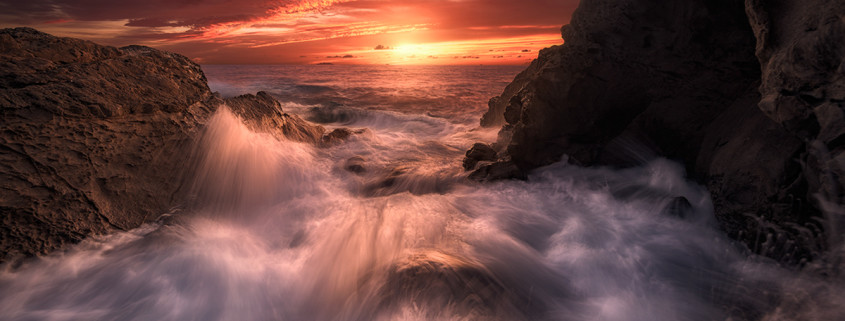
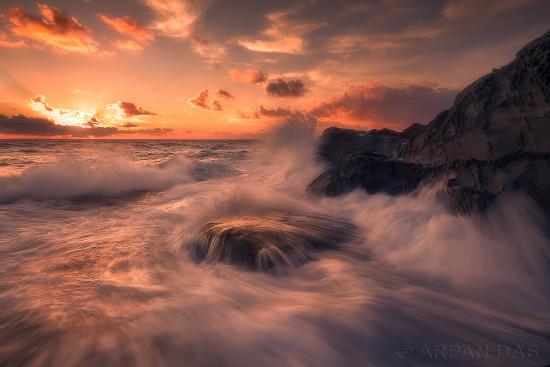
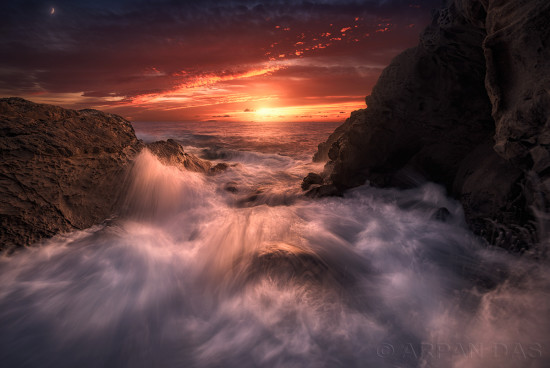
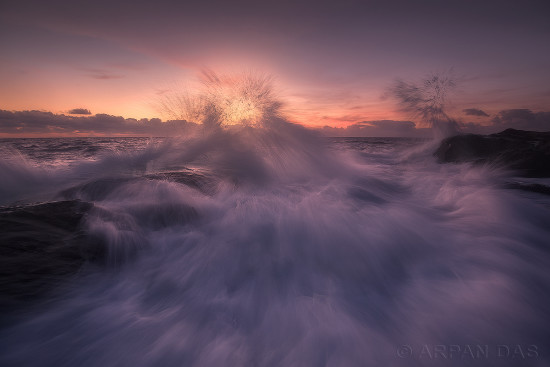
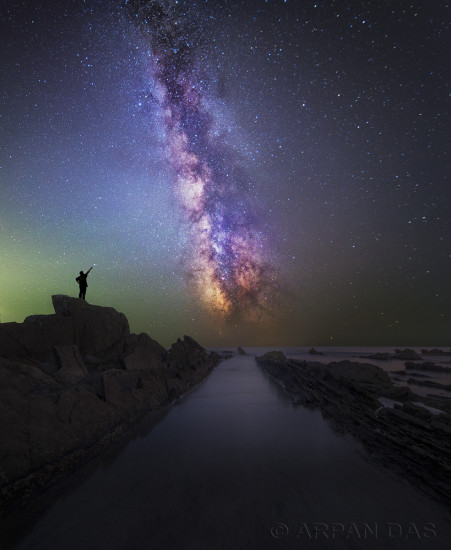



PATEL’S GET BUSY WITH SOME MORE VIDEOS. YOU 2 ARE JUST SO PLEASURABLE TO WATCH AND LEARN FROM. I HAVE PURCHASED 2-OR-3 OF YOUR VIDEOS. ITS TIME TO SEE YOU 2 ON LOCATION AND HEARING DESRIPTIVE TECHNIQUES OF YOUR SHOTS. MORE ON DENSITY FILTER FOR DAY/LONG EXPOSURES ETC. GET GOING GUYS
THANKS
CARY DAN
IRVING/HOLLY LAKE RANCH, TEXAS
Your wish is our command. We have 4 courses in works. We hope to release the next course in Sept 2016…and then one in Nov 2016.